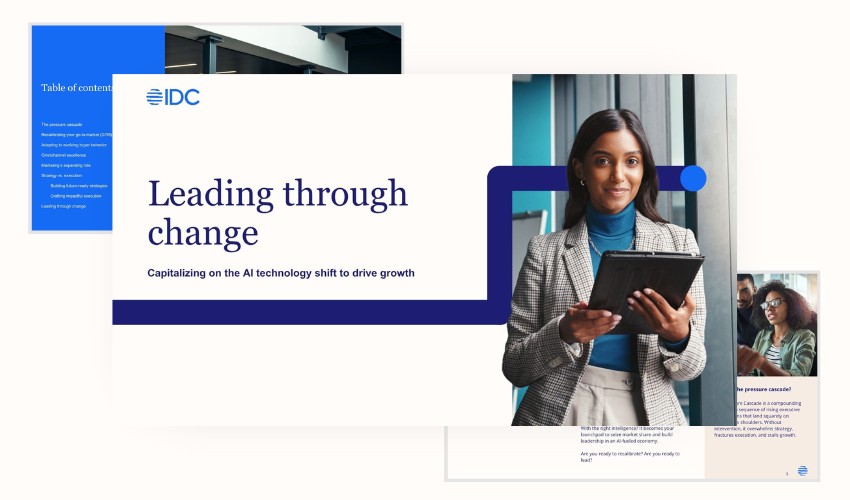AI is no longer just a feature in your product. It’s part of how your buyers behave and interact with your brand.
While your team has been working hard to build AI into services and solutions, buyers have been sharpening their own AI skills too. AI is now embedded in how they research, evaluate, and validate decisions.
In this new landscape, it’s not the companies that simply offer AI that stand out. It’s the ones that know how to market it and use AI to their advantage.
So if your product is changing, and your buyers are changing, it is time for your go-to-market (GTM) strategy to change too.
Why marketing feels the squeeze
This can cause a lot of pressure on marketing teams who are already battling against competing demands from executives:
- CEOs expect bolder innovation and faster growth.
- CFOs want clear ROI from AI investments.
- CIO/CTOs demand secure integration aligned with technology roadmaps.
39% of C-suite executives say customer acquisition is marketing’s top priority.
As a result, marketings role is expanding dramatically. Teams must now own buyer intelligence, ensure they stand out in a saturated market, and orchestrate a connected journey across digital and human interaction.
Without recalibration, these demands can overwhelm marketing. But with the right insights, the pressure cascade becomes a launchpad for momentum and leadership.
Your product changed. So did your buyer.
Once AI was built into solutions, buyers not only began to accept it, they started to expect it with competitors following suit. Now, with buyers leveraging AI on their side, the rules of engagement have shifted.
Sixty-nine percent of buyers will only engage with content that feels personalized. That means messaging and approach needs to change. It’s about creating the right messaging that reaches the right buyer, at the right time, in the right channel, and in the right format.
And it’s not only one buyer anymore. Modern buying committees can include VPs of customer experience, VPs of cybersecurity, heads of data and AI strategy, and IT procurement managers.
Each of these stakeholders approaches the journey differently and enters at a different stage. If your strategy doesn’t account for each one, it can derail the deal. Marketings job is to anticipate, tailor, and orchestrate messaging for all.
Understanding who is in the buying committee is only half the challenge. The other half is keeping pace with how they buy. AI has made the journey more fluid, more self-directed, and spread across countless touchpoints—all of which buyers expect to feel connected.
The AI-assisted buyer journey
Understanding who is in the buying committee is only half the challenge. The other half is keeping pace with how they buy. AI has made the journey more fluid, more self-directed, and spread across countless touchpoints—all of which buyers expect to feel connected.
Today’s buyer journey is fluid, AI-assisted, and omnichannel. IDC research shows that buyers seamlessly move between digital and human touchpoints: reading analyst reports, attending webinars, engaging with ads, visiting websites, and testing self-service tools.
At the same time, they use AI to weigh trade-offs, simulate outcomes, and filter vendors before sales ever enter the picture.
Success isn’t about being everywhere. It’s about making each interaction intentional. A diagnostic tool can help uncover a blind spot. A webinar can reframe strategy. And a sales conversation can build directly off of what buyers have already explored.
When every step feels orchestrated, you remove friction and create momentum in the journey.
Recalibrate your GTM journey
So what does that recalibration look like?
- Build a buyer-first intelligence engine
Move beyond assumptions. Use real-time signals and verified insights to guide your strategy. - Differentiate with outcomes, not features
Everyone has AI. The winners will frame their solutions around measurable customer impact. - Orchestrate across personas and channels
Ensure handoffs don’t become gaps. Design transitions that feel intentional, not accidental. - Align across the business
Sales, product, CX, and marketing must share the same buyer narrative. Without alignment, execution fractures. With alignment, you unlock momentum.
Those who start recalibrating today won’t just keep pace with change, they will define it.
Download the IDC eBook Leading Through Change to learn how to recalibrate your GTM with real buyer intelligence, omnichannel excellence, and outcome-driven differentiation.





